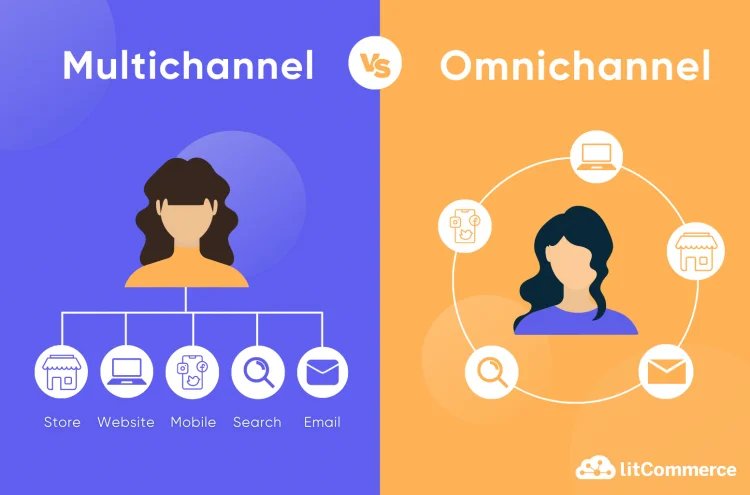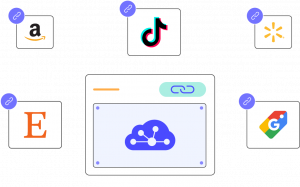Here we are, comparing multichannel vs omnichannel. Multichannel is like offering multiple paths to a destination where customers choose their route, but the experience might vary. On the other hand, omnichannel creates a highway system where all routes connect seamlessly, providing a smooth, unified journey for the customer.
While we’ve touched on the key ideas, a deeper understanding of multichannel vs omnichannel is crucial to choosing the right strategy for your business. This article will explore the nuances of each approach and help you make an informed decision through these sections:
- Multichannel vs omnichannel example and definition.
- Difference between multichannel vs omnichannel (Multichannel focuses on maximizing reach by providing multiple independent customer interaction channels, while omnichannel prioritizes a seamless, integrated customer experience across all channels).
- Cases to choose between multichannel vs omnichannel (Multichannel for cost-effectiveness, clear performance measurement, or targeted marketing, and an omnichannel for great customer experience and data-driven decision making).
Multichannel vs Omnichannel: Quick Assessment
Before deeply diving into the difference between multichannel and omnichannel, first, we need to understand the nature of these two models!
What is multichannel? Examples included
Multichannel refers to providing customers with access to your brand through multiple channels. These channels can be online (website, social media, mobile app) or offline (physical stores, phone support, mail-order catalogs). Each channel operates independently, and the customer experience might differ slightly depending on the chosen touchpoint.
Examples of multichannel:
- Warby Parker: This eyewear company is one of the very successful brands with multichannel marketing strategies. They offer online shopping, home try-on programs, and physical stores. Customers can browse the vast selection online, order glasses for home try-on, and then opt to visit a physical store for adjustments or assistance.
- Lululemon Athletica: This athletic apparel brand has a robust online store with detailed product information, in-store yoga classes to build community and engagement, and a mobile app for easy purchases and loyalty program management.
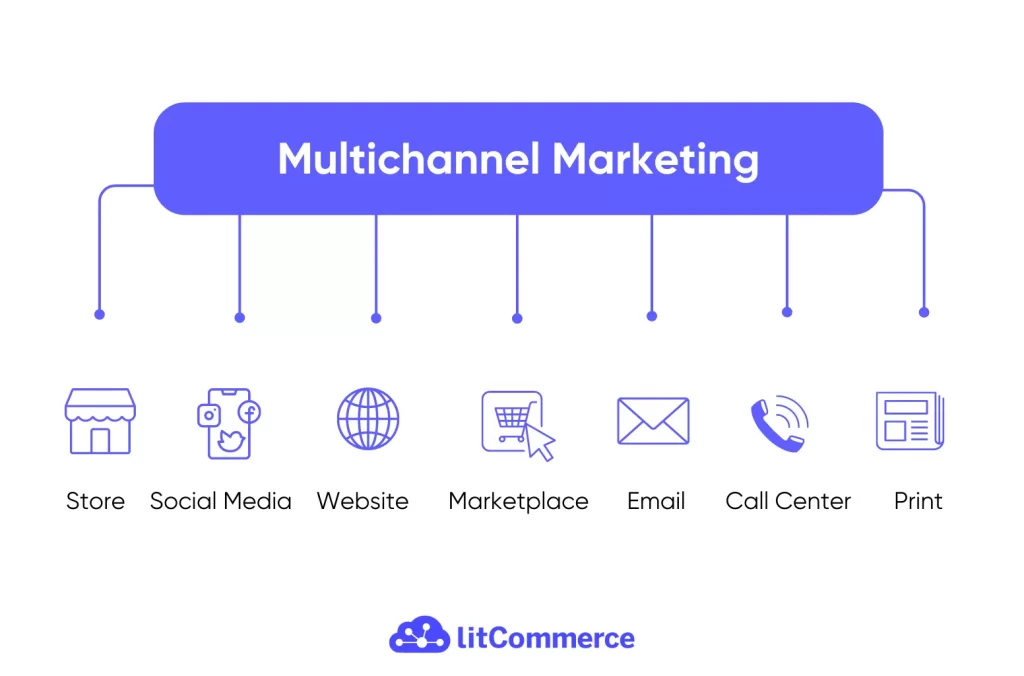
Handy tips: Discover some more interesting things about the multichannel model in the article: Multichannel distribution for your business.
What is omnichannel? Examples included
Omnichannel goes beyond just offering multiple channels. It creates a unified customer experience across all touchpoints, with seamless integration and data sharing between channels. The customer journey is smooth and consistent, regardless of the channel used for interaction.
To better visualize Omnichannel, let’s look at the following two examples:
- Sephora: This beauty retailer excels at omnichannel eCommerce. Customers can browse products online, book in-store beauty consultations, access their loyalty program points across platforms, and even use the app’s virtual makeup try-on tool.
- The Home Depot: The Home Depot offers online shopping, in-store pickup for online orders, a mobile app for project planning and product information, and in-store workshops to educate customers. All these elements are interconnected, creating a unified and helpful experience for DIY enthusiasts.
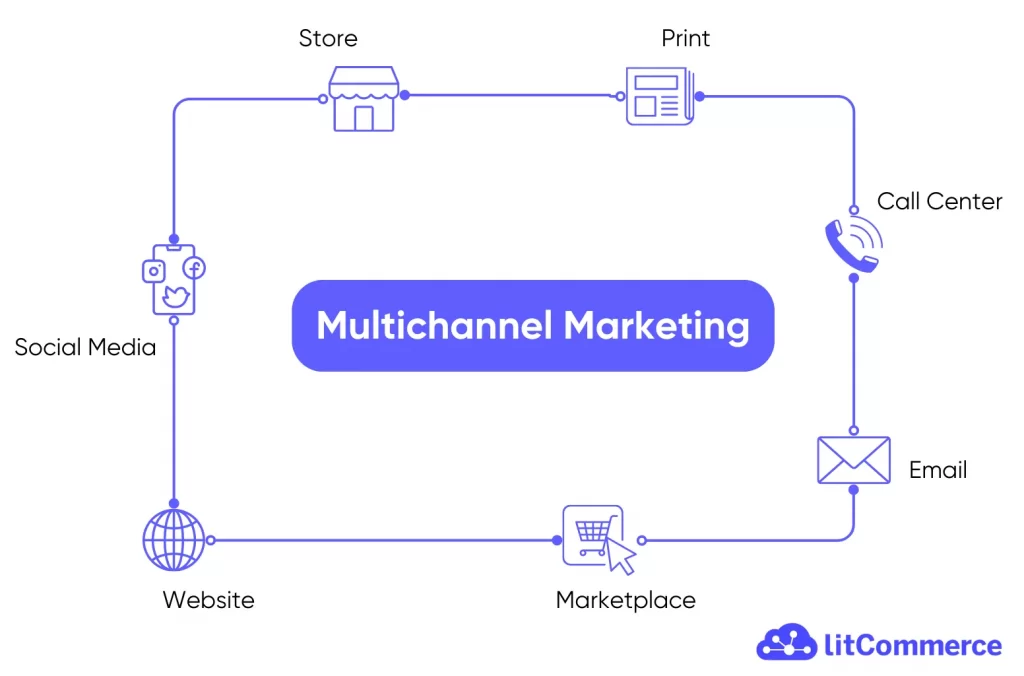
Useful tip: To better understand Omnichannel, you can learn our article Integrated marketing vs Omnichannel marketing.
Take Your Multichannel Strategy to The Next Level!
Discover how LitCommerce’s marketplace selling tool can transform your multi-channel management by integrating your sales data for a unified experience.
5 Major Differences Between Multichannel vs Omnichannel
While both multichannel vs omnichannel approaches offer multiple avenues for customer interaction, they differ significantly in their core focus, how they handle the customer journey, and the level of integration behind the scenes.
You can look at this table to quickly visualize the difference between omnichannel vs multichannel:
Feature | Multichannel | Omnichannel |
Focus | Quantity of channels offered | Quality and integration of channels |
Customer Experience | Fragmented, may differ between channels | Smooth and consistent across all channels |
Channel Integration | Channels operate independently | Channels are highly integrated, data flows seamlessly |
Data and Analysis | Data analyzed separately for each channel | Data aggregated and analyzed for a holistic view |
Implementation | Relatively simpler, requires less technological change | Requires significant investment in technology and organizational alignment |
Beyond the surface level, here are the five core differences between multichannel vs omnichannel.
1. Focus
The primary distinction between multichannel vs omnichannel retailing lies in their respective focal points, as detailed below:
- Multichannel: The primary focus of a multichannel strategy is to create a presence across multiple platforms to maximize reach and visibility. Businesses utilizing a multichannel approach engage customers through various independent channels like physical stores, websites, social media, email, and more. Each channel works as a separate entity with its own set of goals and performance metrics.
- Omnichannel: In contrast, an omnichannel strategy is centered on generating a seamless and cohesive customer experience across all channels. The focus here is on integrating all touchpoints to provide a unified and personalized journey for the customer.
2. Customer experience
This difference in focus results in distinct customer experience journeys between omnichannel vs multichannel retail, specifically:
- Multichannel: The customer experience can be fragmented across different channels. Information might not readily flow between platforms, leading to inconsistencies. Promotions or loyalty programs might not seamlessly integrate between online and offline channels. The customer might need to repeat information or inquiries when switching between channels.
- Omnichannel: The customer experience is smooth and consistent. Information like purchase history, preferences, and loyalty points are readily available across all touchpoints. Promotions are consistent, and customer service inquiries can be addressed efficiently regardless of the channel used for initial contact.

3. Channel integration
Another clear distinction between multichannel vs omnichannel retail is the level of channel integration:
- Multichannel: Data from each channel is typically analyzed separately. This can make it challenging to get a holistic view of customer behavior and preferences. Businesses might miss opportunities to personalize marketing efforts or identify trends across all customer touchpoints.
- Omnichannel: Customer data from all channels is aggregated and analyzed together. This offers a 360-degree view of the customer journey, allowing for more targeted marketing campaigns, personalized product recommendations, and improved customer service interactions.
Take Your Multichannel Strategy to The Next Level!
Discover how LitCommerce’s marketplace selling tool can transform your multi-channel management by integrating your sales data for a unified experience.
4. Data and analysis
The level of channel integration distinctly influences the data and its analysis direction between multichannel marketing vs omnichannel marketing. Specifically:
- Multichannel: Data from each channel is typically analyzed separately. This can make it challenging to get a holistic view of customer behavior and preferences. Businesses might miss opportunities to personalize marketing efforts or identify trends across all customer touchpoints.
- Omnichannel: Customer data from all channels is aggregated and analyzed together. This gives insight into a 360-degree view of the customer journey. This enables better marketing and advertising targeting. Also, you can suggest the right products to customers and enhance interpersonal communications.
5. Implementation
In summary, the differences highlighted above create a significant contrast between multichannel vs omnichannel strategies, especially in terms of how to begin implementing them. Here, we will show you how:
- Multichannel: Implementation is relatively simpler. Businesses can add new channels to their existing infrastructure without extensive technological changes. However, this approach might require more effort in terms of:
- Maintaining consistency across channels. (Get expert tips for maintaining consistency in our in-depth guide to Multichannel Distribution)
- Ensuring a smooth customer experience when switching between them.
- Omnichannel: Implementation requires a more significant investment. Businesses need to invest in robust technology infrastructure that can integrate data across channels. This might involve:
- Implementing a customer relationship management (CRM) system, a unified data platform, and tools for seamless communication between online and offline operations.
- Breaking down silos between departments. They also foster a collaborative work environment that delivers a unified customer experience.
Leverage LitCommerce for Multichannel Selling
Diversify your sales avenues effortlessly with LitCommerce, empowering you to list your products on over 20 most trending sales channels.
Multichannel vs Omnichannel Examples
Oddie’s multichannel strategy
Multichannel strategies are mostly found in retail or the B2C area. Let’s take the example of The Oddie, an Australian’ oversized blanket hoodie brand, and see how they implement multichannel strategies.
This brand has employed a variety of channels to expand their reach and drive sales growth. Oddie has built their own web store, where customers can easily see all the product categories of this brand. Besides, they also tapped into the Amazon marketplace to showcase their products.
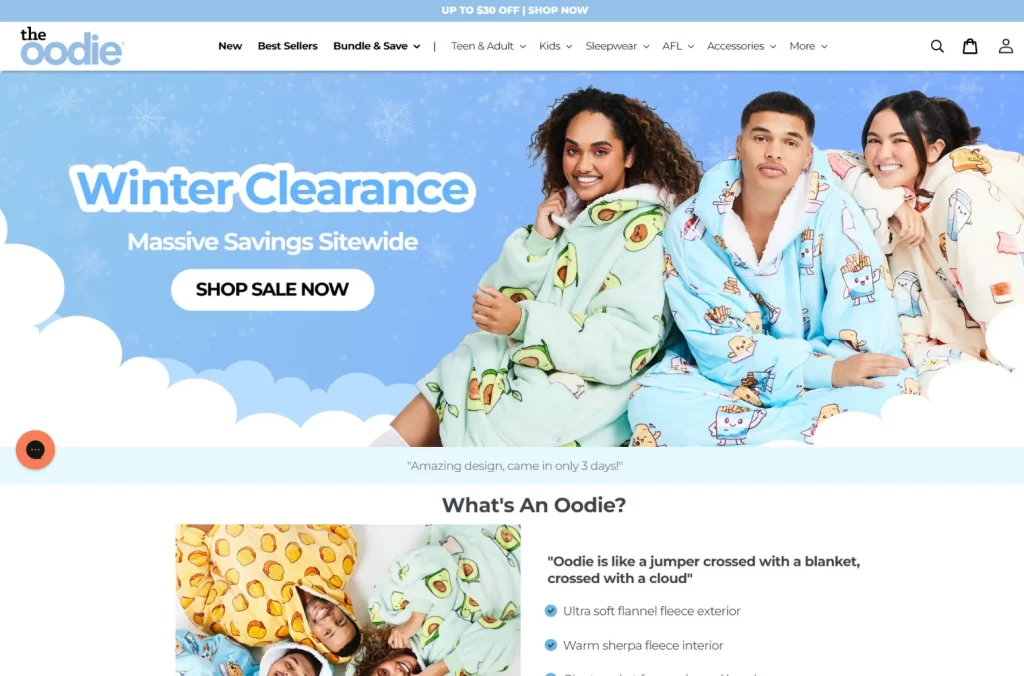
Regarding social media, it’s no secret that fashion brands love Instagram and TikTok. Oddie is no exception. They harness the power of short videos to reach their young audience. In 2019, this brand got $1.6 million in sales. Remarkable result: Last year, in 2022, The Oddie reached $184 million in sales. Impressive, right?
Starbucks’ omnichannel strategy
A notable example of an omnichannel approach is Starbucks. The Starbucks Rewards app will reveal why this brand stays on top of offering a great omnichannel experience.
Let’s say you get a free rewards card that you can use when you order a drink in any Starbucks store. Unlike other brands that offer traditional loyalty reward cards, Starbucks allows their customer to check and reload cards in the app, by phone, on its website, and in-store. Any changes will be updated immediately, in real-time. The process is quick enough that you can reload the card while waiting in line to order.
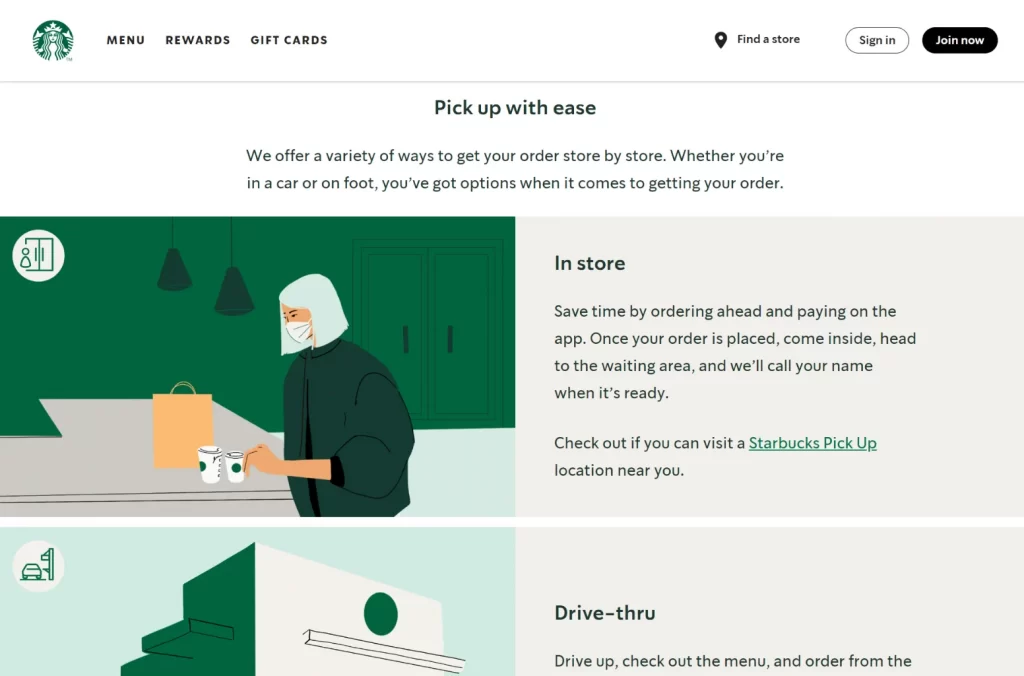
The online order and curbside or in-store pickup model is also a part of Starbucks’ omnichannel strategy. This brand offers a variety of ways to get your order store by store. Whether you’re in a car or on foot, you’ve got options when it comes to getting your order.
Multichannel vs Omnichannel: Which is Right for Your Business?
Both omnichannel vs multichannel marketing have their merits and can significantly impact a firm’s ability to attract and retain customers. This section digs into the scenarios where choosing an omnichannel strategy is advantageous and where a multichannel approach might be more appropriate, backed by data and real-world examples.
Cases to choose multichannel
When comparing multichannel vs omnichannel, multichannel strategy is ideal for businesses prioritizing any of the following situations:
- Simpler and cheaper to set up
- Clear performance measurement
- Targeted marketing and messaging
1. Simpler and cheaper to set up
When analyzing the differences between omnichannel vs multichannel eCommerce, it’s apparent that multichannel is the more economical option. Implementing an omnichannel strategy can be complex and costly. It requires significant investment CRM system, a unified data platform, and communication tools for online and offline operations. These technologies can be expensive, especially for smaller businesses. For example, a basic CRM system can cost anywhere from $15 to $1,500 per user per month, depending on the feature
Conversely, multichannel focuses on adding new sales channels (website, social media, physical store) without extensive integration. This reduces the need for complex IT projects and allows businesses to leverage their existing infrastructure. Also, with its focus on individual channels, multichannel might require less extensive training, depending on the chosen channels.
According to Shopify report, companies using multiple channels can experience significant cost savings, with per-interaction costs dropping by an annual rate of 7.5%.
Thus, for smaller businesses or those with limited resources, a multichannel approach may be more feasible.
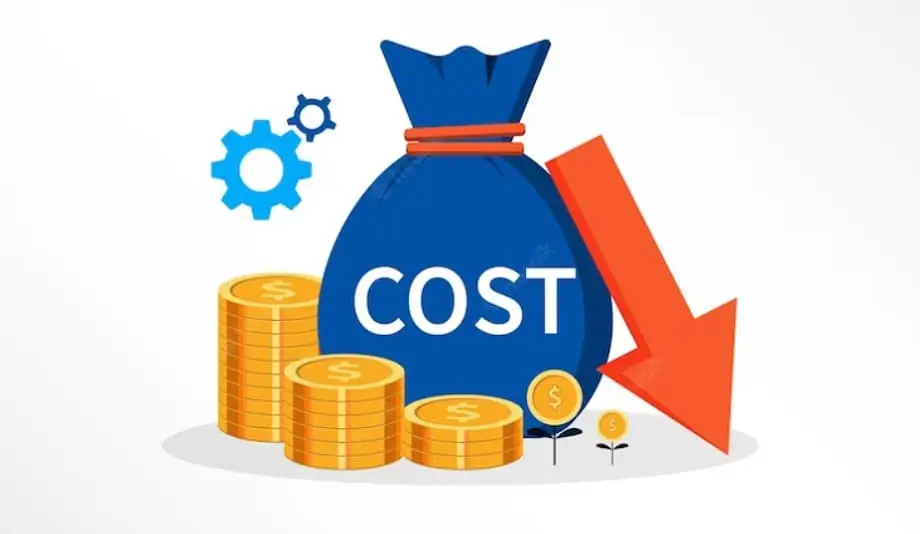
2. Need clearer performance metrics
Managing multiple distinct channels can provide clearer and more straightforward performance metrics. By keeping channels separate, businesses can more easily track and analyze each channel’s performance, identifying strengths and weaknesses without the complexity of integrated data. This clarity can benefit businesses looking to optimize individual channels and allocate resources more effectively.
Staples, the office supply giant, offers a compelling case study for the advantages of a multichannel approach, particularly regarding performance measurement. Staples operates through an e-commerce website, physical stores, and business-to-business sales. Each of them caters to different customer needs such as online shopping convenience, tactile in-store experiences, and dedicated B2B account management.
Staples can track and analyze channel-specific performance metrics like conversion rates, foot traffic, and deal sizes. This detailed data helps identify effective marketing campaigns, peak shopping hours, popular products, and high-value customer segments.
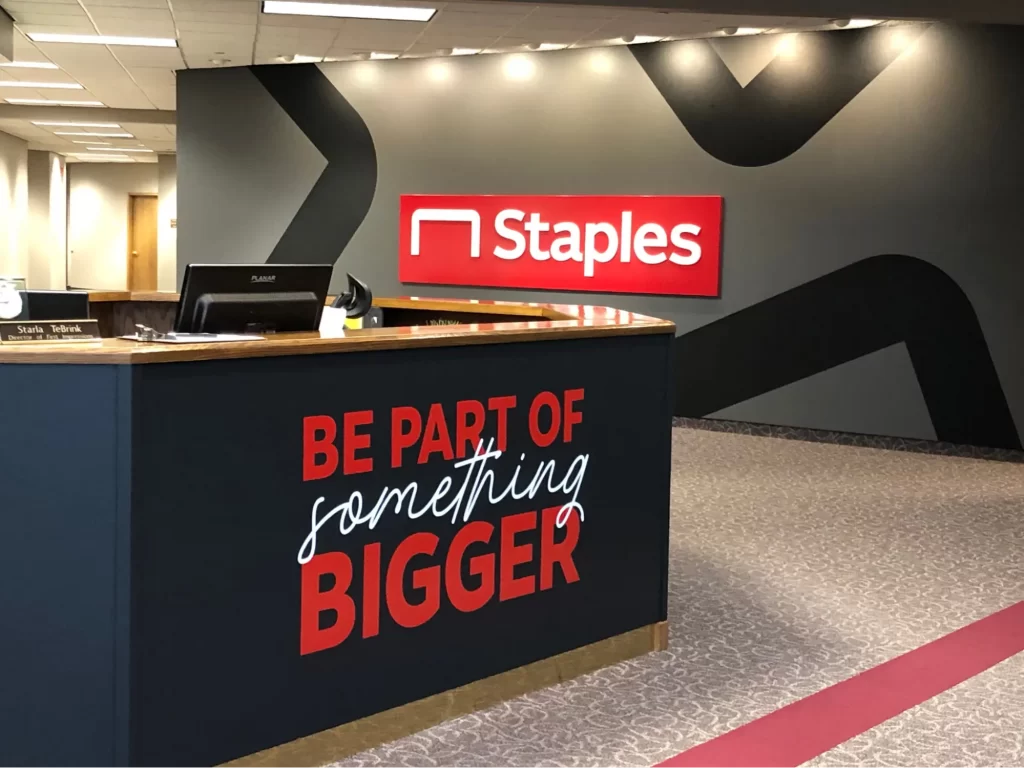
3. Do targeted marketing and messaging
Multichannel strategies allow for more targeted marketing and messaging, as businesses can tailor their approach to the unique characteristics of each channel. This specificity can lead to more effective marketing campaigns and higher engagement rates. For businesses with diverse customer segments, this targeted approach can be particularly advantageous.
Dollar Shave Club (DSC) is a prime example of how a multichannel strategy with targeted messaging can dominate the eCommerce market. DSC recognized a gap in the market for affordable, convenient razors. They targeted two main segments:
- Millennials: Price-conscious, tech-savvy individuals who dislike traditional retail experiences.
- Busy professionals: Individuals who value convenience and time-saving solutions.
They leveraged various channels to reach each segment effectively:
- Social media: Humorous and engaging content on platforms like YouTube resonated with millennials, while professional messaging on LinkedIn appealed to busy professionals.
- Email marketing: Targeted email campaigns offered specific promotions and addressed the pain points of each segment (e.g., affordability for millennials, convenience for professionals).
- Content marketing: Blog posts and infographics on men’s grooming habits provided valuable content while subtly promoting DSC products.
This multichannel approach with targeted messaging led to:
- Rapid customer acquisition: DSC reached millions of customers within a short period.
- High engagement: Their humorous social media content went viral, generating significant brand awareness and customer interaction.

Cases to choose Omnichannel
If you prioritize the following cases, then an omnichannel strategy can be a powerful asset for your business:
- A seamless customer experience
- Data-driven decision making
If you identify with any of the following three needs (or all of them), it’s essential to implement an omnichannel strategy as soon as possible:
1. Enhance customer experience
An omnichannel strategy seamlessly integrates various channels, providing a consistent and unified customer experience across all touchpoints. 74% of customers perform online research before visiting a physical store. This indicates that a robust online presence that complements the physical store is essential.
Plus, according to a study by Aberdeen Group, companies with strong omnichannel customer engagement retain an average of 89% of their customers, compared to 33% for companies with weak omnichannel engagement. This high retention rate is largely due to the seamless transition customers experience when moving between different channels, such as physical stores, online platforms, and mobile apps.
For example, Starbucks has mastered the omnichannel experience by integrating its mobile app, website, and physical stores. Customers can order and pay through the app, and their preferences and rewards are consistently updated across all platforms. This level of integration ensures that customers have a personalized and efficient experience regardless of how they interact with the brand.

2. Make decisions based on data
In the multichannel vs omnichannel debate, the omnichannel approach allows for more effective data collection and utilization. By integrating data from various channels, businesses can gain a holistic view of customer behavior and preferences. This comprehensive data set can be used to personalize marketing efforts, predict trends, and make informed business decisions.
Let’s look at Disney as an example. Disney’s omnichannel strategy includes the My Disney Experience app, which integrates with the MagicBand wristband. This system collects data on customer preferences and behaviors throughout the Disney parks, enabling personalized experiences and efficient crowd management. The result is a highly tailored and satisfying customer experience that drives repeat visits and positive word-of-mouth.
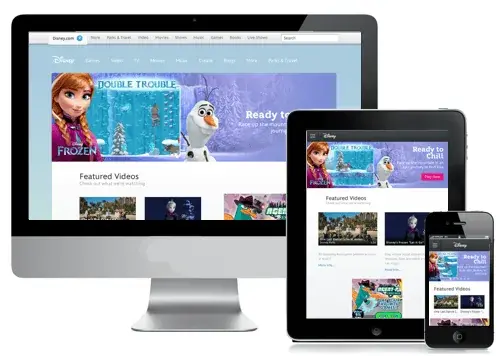
Assess your resources, customer journey, and desired level of channel integration to determine the best fit for your business.
Multichannel vs Omnichannel: FAQs
- What is the difference between omnichannel and multichannel customer support?
The critical point that differentiates omnichannel from multichannel is that omnichannel offers a seamless experience, regardless of where the customer begins the interaction. Whereas multichannel customer service is simply to provide customer support across multiple channels.
- What is the difference between omnichannel and multichannel payment?
Omnichannel payment refers to a unified payment experience across all channels, allowing customers to make seamless transactions regardless of the channel they are using. Multichannel payment, on the other hand, refers to the acceptance of payments through multiple channels, but the experience may not be fully integrated or consistent.
- Is Netflix omnichannel or multichannel?
Netflix is considered a multichannel service. Netflix provides its streaming services through various channels such as its website, mobile applications, smart TVs, gaming consoles, and set-top boxes. While it offers a consistent user experience across these channels, it does not fully embody the concept of omnichannel, as the customer experience is not necessarily synchronized or continuous across all channels.
- Is Amazon multichannel or omnichannel?
Amazon is an example of both multichannel and omnichannel. Amazon operates as a multichannel retailer by offering its products through multiple channels such as its website, mobile app, physical stores (Amazon Go, Amazon Fresh), and third-party marketplaces. Additionally, Amazon incorporates omnichannel elements by providing seamless integration and consistency in the customer experience across these channels, allowing customers to switch between channels effortlessly.
Multichannel vs Omnichannel: Key Takeaways
In general, the choice between a multichannel vs omnichannel approach depends on your business scale and requirements:
- Businesses that seek more customers and distribution channels or expand their online presence might initially find multichannel sufficient.
- As a business grows and its customer base expands, an omnichannel approach becomes more critical to providing a seamless and personalized customer experience.
Any other idea on Multichannel vs Omnichannel? If you do, we’re more than happy to hear your sharings and experience.
Also, don’t forget to follow our blog to update helpful online business tips. If you have any questions, please contact us immediately to get your questions answered.

